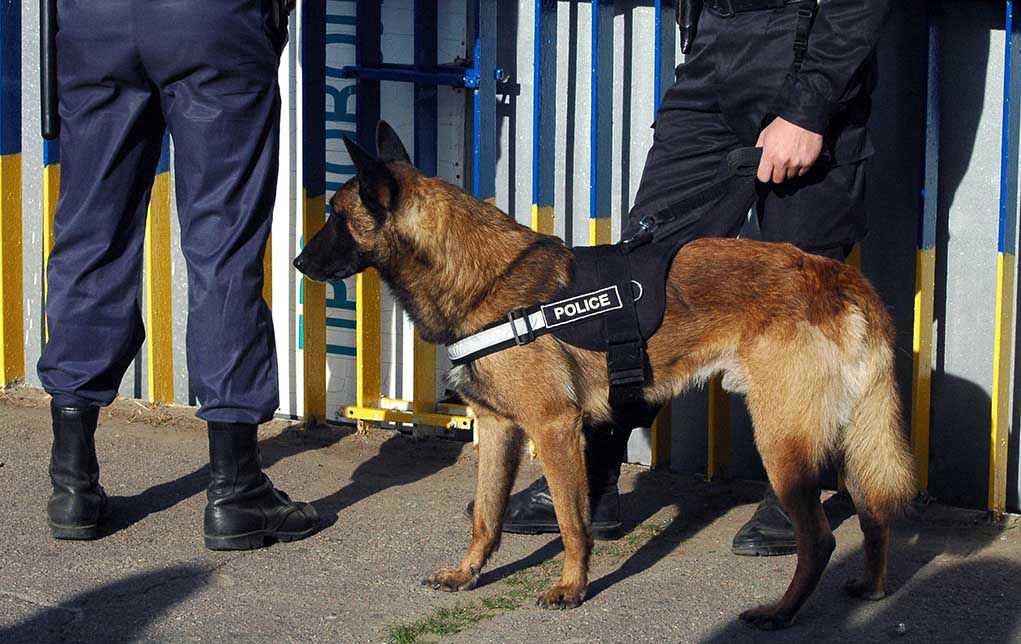
One heroic dog lost a leg but saved dozens of lives in a Colombian war zone, exposing the raw cost of unchecked violence and the real meaning of sacrifice—something America’s policymakers could stand to remember.
At a Glance
- Bomb-sniffing dog Sanson lost a leg in a blast but saved 36 soldiers and countless civilians in Colombia’s Antioquia region.
- ELN guerrillas are blamed for planting the explosive on a path used daily by military and locals, escalating a brutal campaign of violence.
- The Colombian Army hailed Sanson as a “#FourLeggedHero” and released footage of his recovery, sparking national and international attention.
- This incident follows a deadly bomb attack involving an explosive-strapped donkey, underscoring the ongoing threats faced by both soldiers and animals.
- Sanson’s story has ignited debate about the ethics and necessity of using animals in conflict zones—and the failures of so-called peace processes.
Heroism and Loss: What One Dog’s Sacrifice Reveals
In rural Antioquia, Colombia, a region where guerrilla violence is as routine as the sunrise, the line between life and death can be as thin—and as loyal—as a bomb-sniffing dog named Sanson. During a recent patrol in Yondó, Sanson detected an IED planted by the National Liberation Army (ELN) on a path used daily by soldiers and civilians. When the device detonated, Sanson took the brunt of the blast, losing a leg but saving the lives of 36 soldiers and hundreds of locals who, by sheer luck or canine courage, lived to see another sunrise.
This is not a Hollywood script. It’s the grim reality for those forced to rely on four-legged heroes to compensate for the failures of governments, the arrogance of terrorists, and the indifference of the so-called “international community.” Sanson’s handler, soldier Carlos Eduardo Beleño, rushed to his companion’s side as the dust settled. The army rushed Sanson to surgery and announced, with a mixture of pride and heartbreak, that their canine hero would survive—minus a leg, and minus his career in active service.
Guerrilla Tactics: Civilians and Soldiers in the Crosshairs
Colombia’s conflict is not new. The ELN has been waging war for over six decades, using every tool in the terrorist playbook. IEDs, kidnappings, and attacks on both military and civilian targets are routine. What makes this incident stand out is the context: Just two days earlier, a bomb strapped to a donkey killed a soldier and injured two others on a similar stretch of road. The message from the ELN is clear—no life, human or animal, is off-limits when it comes to terror and intimidation.
The Colombian Army, tasked with defending both territory and people, has grown increasingly reliant on bomb-detection dogs. It’s a strategy that works—when it works. Sanson’s sacrifice prevented what could have been a massacre, but it also exposes how desperate times call for desperate, and sometimes heartbreaking, measures. The military’s decision to celebrate Sanson as a “#FourLeggedHero” isn’t just PR; it’s a rare moment of unity in a country where trust is in short supply and violence is a daily lottery.
The Ethics and Fallout of Animal Sacrifice in Human Wars
As videos of Sanson’s recovery flooded social media, the outpouring of support was immediate. But so, too, were the questions. Why are animals being asked to do what technology, policy, and leadership have failed to accomplish? Animal behaviorists and trainers point out the deep bond between handlers and dogs, and the necessity of canine units in asymmetric warfare. But critics argue that this reliance highlights a failure to modernize, to invest in better solutions, or to end conflicts that drag on for generations.
Meanwhile, the ELN’s use of explosives on civilian paths is a blatant violation of international law—a fact that’s been acknowledged, condemned, and then promptly ignored by the world’s “humanitarian” watchdogs. For local civilians, the aftermath is a mix of gratitude and terror. Sanson’s actions spared them unimaginable loss, but the next attack may not be so lucky. In the short term, the army has ramped up patrols and bomb-detection efforts, but the long-term outlook remains grim: peace talks have stalled, violence continues, and the only thing standing between life and death may be the next four-legged hero willing to give everything for people who can’t—or won’t—protect themselves.
A Nation’s Soul: What We Choose to Celebrate
Sanson’s story is about more than heroism; it’s about priorities. Colombia’s government, much like so many others around the world, has spent decades offering empty promises of peace and security while outsourcing the real work to soldiers, civilians, and working animals. The public’s response—overwhelming support for Sanson and outrage at the ELN—shows that, when it comes down to it, people still recognize courage and sacrifice, even if their leaders do not.
For those who value order, safety, and the rule of law, Sanson’s sacrifice is both an inspiration and a warning. When institutions fail to protect their own, it falls to individuals—and sometimes, to loyal animals—to pick up the slack. That’s a lesson the world, and especially those who believe in real security and common sense, would do well to remember.

















